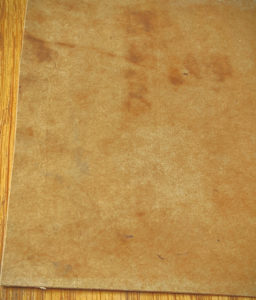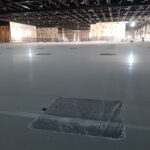Composite binders are important materials used in furniture, flooring and other consumer products, but they can pose health hazards. Now, Purdue University researchers have developed a lower-cost, sustainable and greener method for producing composite boards – a method that is already seeing growing support from major industry players.
Lignin extraction method
Fabrication of many composite boards requires the use of formaldehyde-based resin binders that are released into the home environment over time, posing significant health hazards since formaldehyde is a known carcinogen.
The method developed at Purdue University allows the researchers to take non-food-based biomass such as wood chips, sawdust or rice straw, and put it through a process to extract lignin-like material. This one can then be used as the main component in a non-formaldehyde binder system for composite boards, said James Caruthers, Purdue’s Gerald and Sarah Skidmore Professor of Chemical Engineering. Basically, this method is sustainable and green because lignin is a waste byproduct and a biopolymer abundant in nature.
Growing interest for Purdue technology by manufacturers
 The team worked with the Purdue Research Foundation Office of Technology Commercialization to patent this technology. The researchers and OTC have been collaborating with the companies CalPlant and Wilsonart to bring the Purdue technology to the market. Wilsonart is a global manufacturer and distributor of high-pressure laminates and other engineered composite materials. CalPlant, an agrifiber-focused company, produces rice straw-based medium-density fiberboard.
The team worked with the Purdue Research Foundation Office of Technology Commercialization to patent this technology. The researchers and OTC have been collaborating with the companies CalPlant and Wilsonart to bring the Purdue technology to the market. Wilsonart is a global manufacturer and distributor of high-pressure laminates and other engineered composite materials. CalPlant, an agrifiber-focused company, produces rice straw-based medium-density fiberboard.
Actually, the Purdue team is looking to commercialize the patented method for production of this lignin-based material for use in the production of composite boards, where there may be other applications such as adhesives, detergents, abrasive product making, filter paper and many other products.
“We see this Purdue technology helping us stay on the cutting edge in the rice straw manufacturing field with sustainable and green solutions,” said Jerry Uhland, CEO for CalPlant. “The novel Purdue method is intriguing as we look to use lignin-based resin. This has been a very interactive process as we tap into the innovative environment of the university.”
The sustainability advantages of the technology
Tests using the Purdue team’s method showed that the combination of lignin-based resin with cellulosic fibers in matrix with the cross-linkable variations produced composite boards with desirable physical properties. Mahesh Subramanian, director of technology operational excellence for Wilsonart, said: “The Purdue technology has applications and potentially major sustainability advantages for our sourced fiber boards use as glue binder and treated Kraft paper and carrier mediums, as resin extensions and is the building block of laminates and composite compacts. The preliminary tests have already demonstrated the viability of a saturating-type resin.”
The Purdue composite board binder technology also received funding from the Trask Innovation Fund, a development program established to support projects that advance the commercial value of Purdue intellectual property.
“A cost analysis shows a cost reduction over current formaldehyde-free composite board production when fabricating medium-density fiber boards,” Caruthers said. “This technology provides a low-cost sustainable, green method for producing composite boards that could deliver higher margins to composite board manufactures, while at the same time reducing long-term consumer exposure to formaldehyde.”
The functional lignin derivative also has established characteristics aiding antifungal and flame-retardant characteristics. This offers future avenues for chemistry to perfect. The other residual part of lignin derivatives separated is cleaner wood and opens the door for cellulosic opportunities.
Source: Purdue University
Images | Credit: Purdue University












